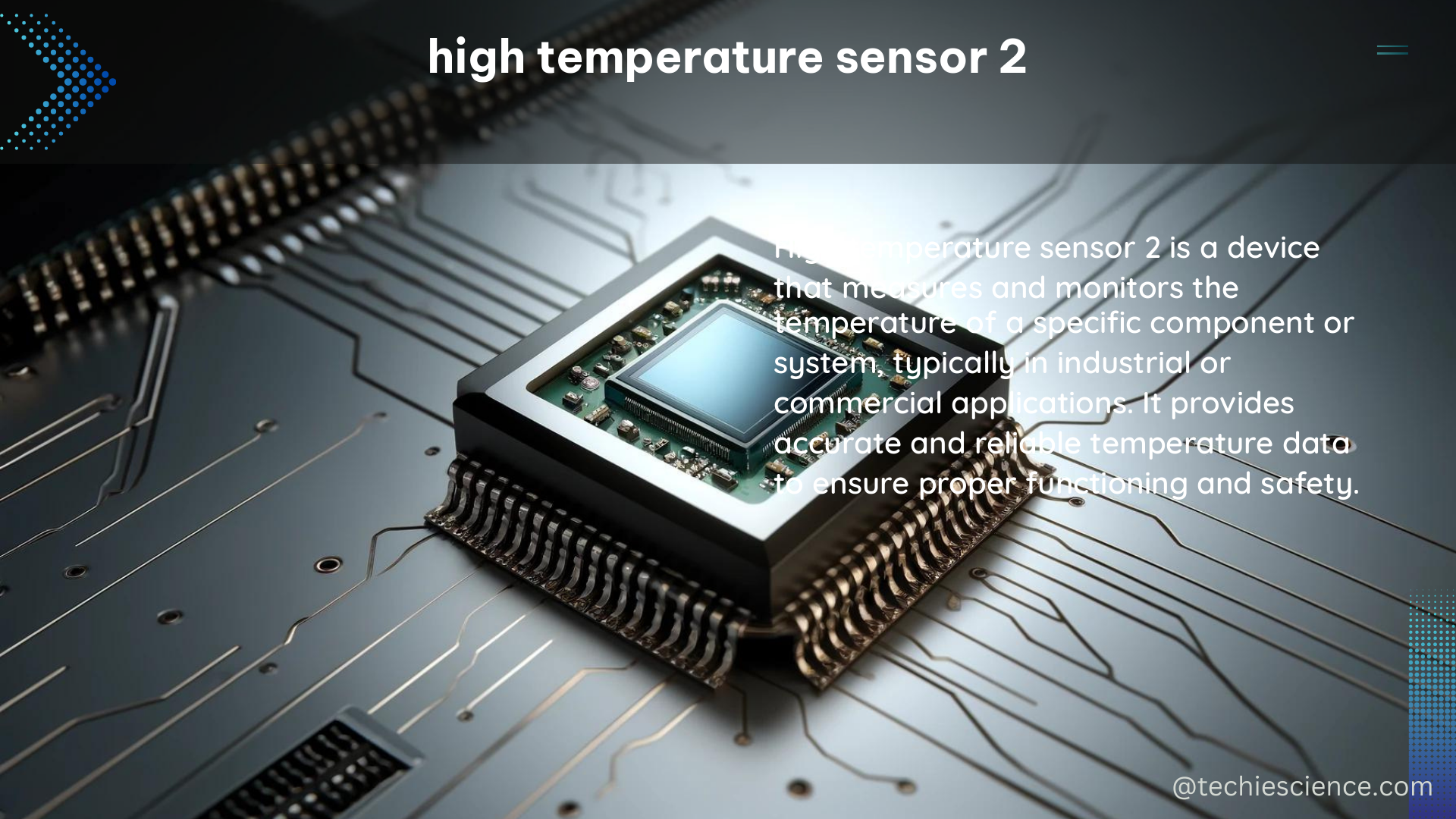The high temperature sensor 2, also known as a germanium resistance temperature sensor, is a highly sensitive and accurate temperature measuring device with a useful temperature range of about two orders of magnitude, from below 0.05 K to 100 K. It is recognized as a “Secondary Standard Thermometer” and has been employed in the measurement of temperature for more than 40 years.
Understanding the Sensor Characteristics
The sensor resistance of high temperature sensor 2 varies from several ohms at its upper useful temperature to several tens of kilohms at its lower temperature, providing a high degree of resolution at lower temperatures. This makes it very useful for submillikelvin control at 4.2 K and below. The germanium sensor has excellent reproducibility, better than ±0.5 mK at 4.2 K, and excellent resistance to ionizing radiation.
| Characteristic | Value |
|---|---|
| Temperature Range | 0.05 K to 100 K |
| Resistance Range | Several ohms to several tens of kilohms |
| Reproducibility | Better than ±0.5 mK at 4.2 K |
| Radiation Resistance | Excellent |
Optimizing Data Quality and Performance

To ensure accurate and reliable temperature measurements, it is important to implement laboratory key performance indicators (KPIs) to monitor the processes, inventory, and environment of the lab. Data quality can be monitored by performing regular quality control tests with certified reference samples, and the accuracy and precision of repeated measurements on reference samples can be determined and used as KPIs.
Environmental sensors, such as temperature, humidity, and light sensors, have become very affordable and can be integrated with electronic lab notebook (ELN), LIMS, or ERP systems to log and track KPI data. This allows for continuous monitoring and optimization of the lab’s performance.
Implementing KPIs for High Temperature Sensor 2
- Accuracy: Measure the deviation of sensor readings from certified reference samples.
- Precision: Determine the repeatability of sensor measurements on reference samples.
- Stability: Monitor the sensor’s resistance and temperature readings over time to ensure long-term stability.
- Environmental Factors: Track temperature, humidity, and other environmental conditions that may affect sensor performance.
- Calibration: Regularly calibrate the sensor against certified reference standards to maintain accuracy.
Selecting the Appropriate Sensor Model
When it comes to DIY projects with high temperature sensor 2, it is important to follow the technical specifications and guidelines provided by the manufacturer to ensure accurate and reliable temperature measurements. This may include selecting the appropriate sensor model based on the desired temperature range, package size, and environmental factors, such as:
- Magnetic fields
- Ionizing radiation
- Ultra high vacuum (UHV)
- Vibration/mechanical shock
- Thermal shock
- Temperatures above 323 K
Additionally, the sensor signal should be easily measurable and compatible with the desired data acquisition and analysis system.
Sensor Model Selection Criteria
- Temperature Range: Ensure the sensor can cover the desired temperature range for your application.
- Package Size: Choose a package size that fits your physical constraints and installation requirements.
- Environmental Compatibility: Select a sensor that can withstand the environmental conditions in your setup, such as magnetic fields, radiation, vacuum, vibration, and temperature extremes.
- Signal Compatibility: Ensure the sensor output can be easily measured and integrated with your data acquisition system.
Integrating the Sensor with Data Acquisition
Once you have selected the appropriate high temperature sensor 2 model, you need to ensure that the sensor signal is compatible with your data acquisition and analysis system. This may involve selecting the right signal conditioning circuitry, such as amplifiers, filters, and analog-to-digital converters (ADCs), to properly interface the sensor with your data acquisition hardware and software.
Data Acquisition Considerations
- Signal Conditioning: Determine the appropriate amplification, filtering, and signal conversion requirements for your sensor.
- ADC Resolution: Choose an ADC with sufficient resolution to capture the full dynamic range of the sensor.
- Sampling Rate: Ensure the sampling rate is high enough to capture the desired temperature changes and meet your application requirements.
- Data Logging: Integrate the sensor with your data logging system, such as an ELN, LIMS, or ERP, to record and analyze the temperature data.
- Data Analysis: Develop algorithms and software to process the sensor data, calculate KPIs, and optimize the performance of your high temperature sensor 2 setup.
By following these guidelines and technical specifications, you can successfully implement high temperature sensor 2 in your DIY projects and achieve accurate, reliable, and optimized temperature measurements.
References
- AETC Technical Training Publication 11-1
- Laboratory Key Performance Indicators (KPIs)
- Lake Shore Cryotronics Technical Catalog

The lambdageeks.com Core SME Team is a group of experienced subject matter experts from diverse scientific and technical fields including Physics, Chemistry, Technology,Electronics & Electrical Engineering, Automotive, Mechanical Engineering. Our team collaborates to create high-quality, well-researched articles on a wide range of science and technology topics for the lambdageeks.com website.
All Our Senior SME are having more than 7 Years of experience in the respective fields . They are either Working Industry Professionals or assocaited With different Universities. Refer Our Authors Page to get to know About our Core SMEs.